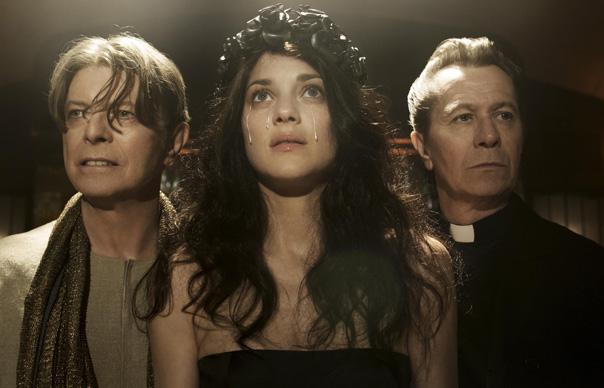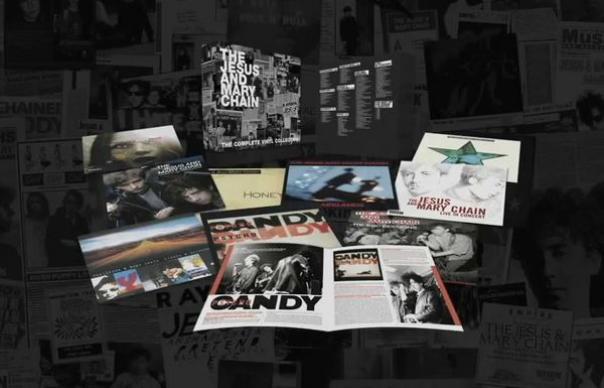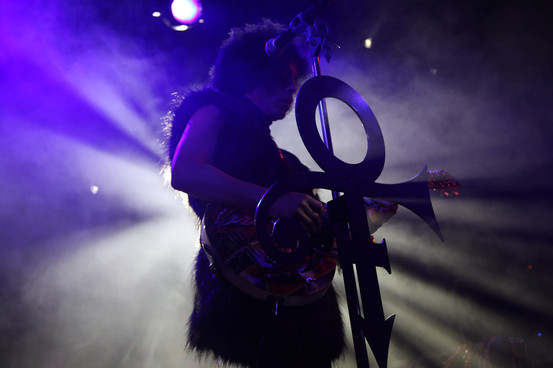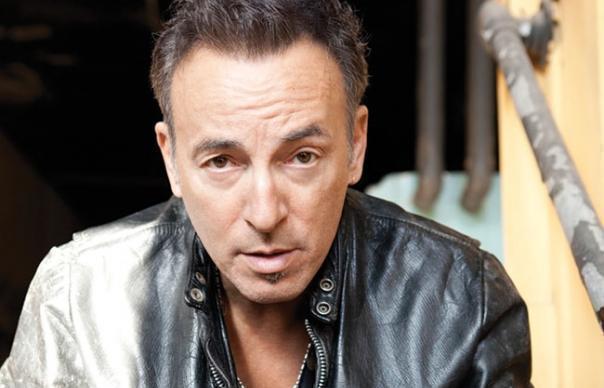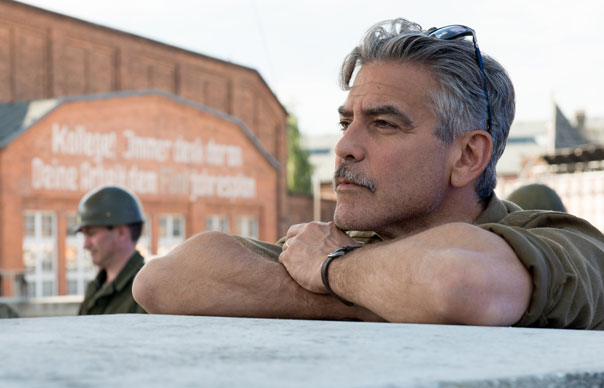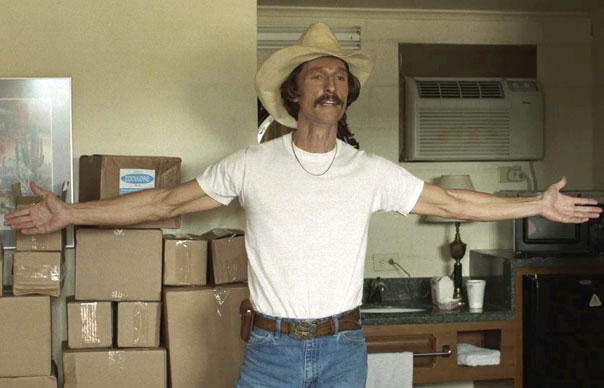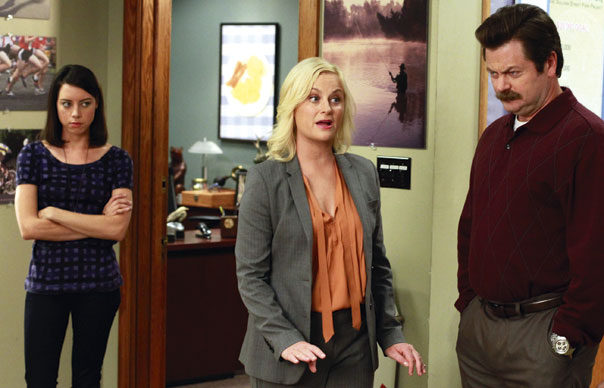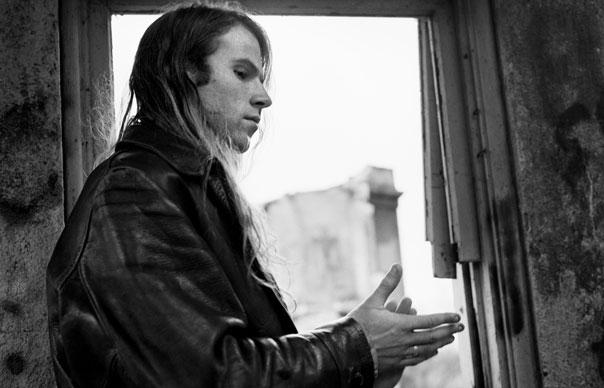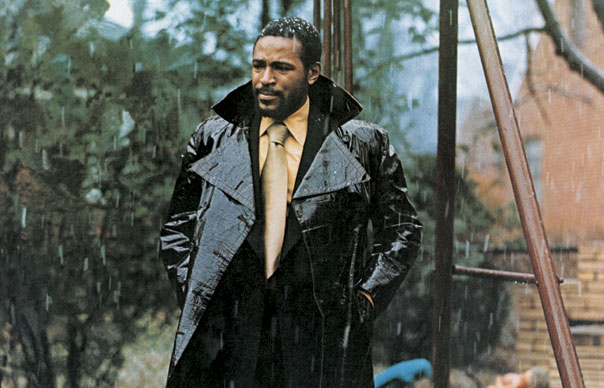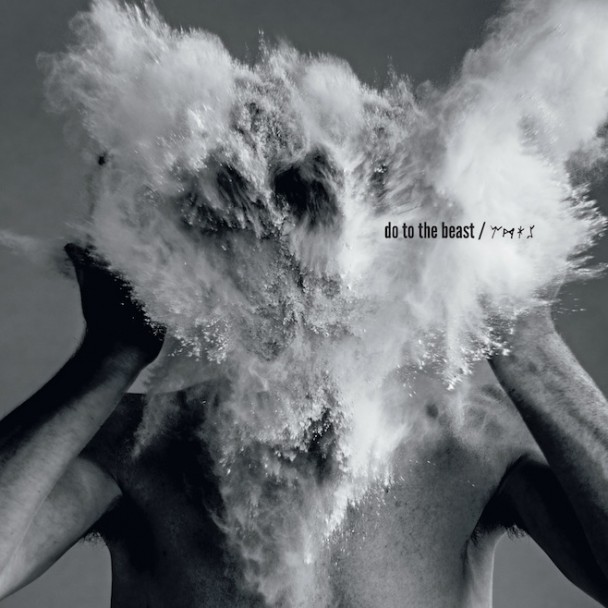Bill Callahan plays London’s Royal Festival Hall tonight (February 7), in support of his Dream River album (and its recent dub remix, Have Fun With God) – so it seems a good time to skip back to our 197th issue, in which Uncut spends an intimate evening at Callahan’s house in Austin, unpicking the mysteries of the Artist Formerly Known As Smog… “I left clues?” Words: Jaan Uhelszki
________________
About two miles south of the Interstate, a five-minute car ride from downtown Austin, is Travis Heights. It’s the last place Stevie Ray Vaughan called home before he started living out of hotels and storage lockers, and it’s where you can spot local resident Robert Plant – whom the locals call “Bob” – and his inamorata Patty Griffin walking their two fluffy dogs through the meandrous streets after sundown.
Local legend has it that when Callahan moved to Austin right after a particularly satisfying SXSW festival, he slept in his car in the parking lot of a La Quinta hotel, before finding a house in South Austin. As it was for the city’s infamous bats, Austin was somewhere Callahan could hide in plain sight – something the determinedly mysterious singer-songwriter is well-versed in. Callahan’s parents both worked for the National Security Agency when he was a child, and so sensitive was their work that he was forbidden to tell his friends what they did for a living.
“It’s not too big, it’s not too small,” he says of Austin. “It’s not overwhelming in either of those country or city ways. A bigger city has more angst. Or something that people can put on you.”
It’s dusk, and there’s a squall line of thunderstorms rumbling through the Texas hill country, intermittently pelting Callahan’s small frame house with fat raindrops, the 40-mile-an-hour winds causing the dark spindly trees in his front yard – which already look as if they had been manicured by Edward Scissorhands – to twist into even more unnatural angles. The porchlight is burned out, and the only illumination inside the bungalow comes from a small paper lantern on the floor and a vintage cut-glass lamp with a tea-coloured shade that sits on a scratched end table.
The house is perfectly symmetrical, with all the walls painted a creamy white. Among the very few objects: a photo of Callahan as a teen in a suburban backyard, practising some martial art with a friend. The kitchen cupboards reveal a preponderance of tea and organic ephemera, but not enough dishes to have a small dinner party. On the refrigerator there is a take-out menu, a schedule for cutting the brush and, oddly, a $10 bill stuck on with a teddy-bear magnet.
What’s that for, I ask?
“Emergencies.”
Further into the spotless kitchen, there is a set of knives on a magnetic strip. And these?
“Emergencies.”
Over 11 fine albums as Smog, and four more exceptional ones under his own name, Bill Callahan has established himself as a determinedly mysterious singer-songwriter. From his first recordings of found sounds at high school in Maryland, through homemade cassettes, and onto the unknowable canon of Smog, Callahan has obscured as much as he has revealed, creating music for endings, epiphanies and quiet revolutions.
His records are always more like collections of short stories than albums of songs; compressed, minimal, with a sharp sense of isolation and space. The characters in his lyrics are men’s men, the kind you might find in a Hemingway novella or Raymond Carver poem — solemn, stoic types who use few words yet impart great wisdom as they try to make their way through the daunting landscape and even more daunting relationships. Callahan has been involved with such arresting woman as the late Cynthia Dall, Chan Marshall, Joanna Newsom and zine-owner and author Lisa Carver, and while he insists that his songs are at most one per cent autobiographical, it’s hard not to imagine that some of those romantic mise en scènes didn’t seep into at least a few songs.
The relationship seems sweeter, more romantic – permanent, even – on his new album Dream River, eight songs connected like islands in an archipelago, each an important piece in explaining the importance of love as well as Callahan’s self-acceptance.
“I would hope it was more than a relationship album. It’s certainly a part of what it’s all about. Love. The value of love,” he says. Unnervingly, his speaking voice is exactly like his singing voice.
Not to be simplistic, but I think you’re in love and I think you have somebody to live for, I say. You’ve left too many clues.
“I left clues?” His tourmaline-coloured eyes narrow.
Certainly in the lyrics. But there are two bikes against the wall. A girl bike and a boy bike.
“Neither of ’em are mine. Those are for you to think about.” Eventually, he concedes, “OK, yeah, I’m in a good relationship,” he admits. “I just try to keep my personal life out of things. The songs should stand on their own.” Usually, Callahan eschews face-to-face interviews. Yet this time he has allowed Uncut into his lair. Why?
“I don’t know. It seemed like the right thing to do,” Callahan says, uncertainly, as he settles his bare feet under him and sinks into the curve of a Victorian tufted couch, all carved wood pieces and overstuffed pillows. It’s the sort of thing you might find expect to find in Stevie Nicks’ spare bedroom.
“Well, the furniture is all rented. And so is the house,” Callahan says, a little defensively.
Since there is something so uncluttered about Callahan’s songs, one assumes that austerity spills into his personal life.
“A lot of people assume I’m neat. My guess is because I don’t dress like a pseudo-hippy. But I usually have a very positive feeling when my home is neat as a pin. You don’t picture God with barbecue sauce stains on his shirt. But is cleanliness next to godliness? A lot of neat freaks are really ungodly, unhappy people.”
Callahan’s T-shirt is spotless, albeit a little stretched-out at the neck, his hair is pushed neatly behind his ears, and the wooden floor is freshly swept. The only thing that seems remotely messy is a black wooden bookshelf, with books wedged in haphazardly without regard for order or alphabetical filing. Bass Playing For Dummies sits near a King Tubby DVD, and Learning Spanish by Michel Thomas, “The Language Teacher to the Stars”, is right next to a Stephen Crane reader. A Moment In The Sun by John Sayles sits below a signed photograph of Peter Falk, which has pride of place in a corner of the bookshelf. For the best part of 22 years, Falk played Columbo, the rumpled, dissembling detective who was consistently underestimated by his suspects, to their eventual detriment.
“I think the most important thing to know about Bill is that he doesn’t consider himself a mystery,” explains Hanly Banks, a Texas-born, New York-based filmmaker who directed last year’s Apocalypse: A Bill Callahan Tour Film.
“I think the name Smog got to feel like a curtain he didn’t want anymore,” explains Connie Lovatt, the bassist on A River Ain’t Too Much To Love, the editor of Callahan’s novel, Letters To Emma Bowlcut, and one of his closest friends. “I do think everyone can see him just a little clearer now.”
“When I changed the name, I felt like it wiped the slate clean so I could start out fresh. I don’t really see it in the realm of the stuff I’ve done in the past,” says Callahan. “I don’t regret ever calling myself Smog, though. It served me because it staved off the tag of ‘singer-songwriter’ for a long time. Half of the time when I get approached, people say, ‘Are you from Smog?’ It sounds like a planet. They don’t know my name, and that’s fine.”
Bill Callahan’s celebrity isn’t the kind that attracts a casual fan. Those who like his music tend to be obsessive about it, and have a sense of ownership over Callahan. Canadian photographer Chris Taylor’s life began to unravel eight years ago, when he turned 30, broke up with his girlfriend, left Spain and returned to his hometown of Victoria, BC. About that same time he bought a Smog CD and things began to make sense. Eventually, he contacted Callahan’s label, Drag City, with a proposal to photograph the artist every day for a month. That project became a 67-page tome, with 35 colour plates catching Callahan in the act of being himself. Released last January as The Life And Times Of William Callahan, the first printing of a special edition has already sold out.
“I had a very clear idea of what I wanted to do. I realise now I was also reaching out to him in a way. I had gone through a bad break-up, and he was sort of going through that with Joanna Newsom. I don’t know if I was just speaking his language, and that’s why he agreed to let me come to Austin, but he said yes,” explains Taylor.
What began as one photograph a day devolved into 10 sessions over a four-week period because, the photographer said, Callahan intimidated him. “Throughout the time I spent with him, I didn’t really know how to keep the sort of rhythm I have. He was always very much slower, and left me feeling kinda funny sometimes. We went on a four-hour car trip to Plano, Texas, and he only said three or four things to me the entire time. I remember asking him what his middle name was, and there was that long Callahan gap of time to reply, then he just went RAWR, like a tiger. I think I looked at him funny, and he said, ‘It’s Rahr. It’s German, and it means rare.’”
Two years ago, filmmaker Banks spent two weeks with Callahan. “I remember saying he reminded me of a peaceful river. Not because he writes about them, but because the thing about rivers is that they don’t end up where they started. And I think every time he moves forward, he moves forward. He does not go back. And there’s something both tragic and powerful about that. It’s a little bittersweet.”
“I agree with that,” Callahan says. “I don’t think my music has made any kind of straight line. Some people’s stuff gets more and more refined, or it comes closer into a point. I think a lot of great music does that, but I don’t. I don’t think I keep to any linear course; it’s like when you look at a river. If you’re walking next to a river, you see it going by and you think it’s always something different. I don’t think it’s ever static. There’s all the twists and turns. I understand that. I like things to be different. Uncertain. I like to be proven wrong. It makes me see things in a different way. It opens things up.
“As for what you call the sparseness of my songs, I always think about it as just cutting away the chaos that there is in thought. I’m always trying to pare it down to something calm and soothing. I work so hard getting there, I feel that’s why I want to share it with people. I don’t want to say everything’s calm, but instead I want to go: ‘Look, I found this satisfying combination of words. I want to share it.’
“Anytime I do anything, I feel I’m taking my greatest risk. I’ll play a show and I say to myself, ‘Why am I going, why am I doing this? Why am I even going onstage? I barely know how to play guitar.’ I feel like that about the writing, too. Just saying I’m going to write a song is a risk. When you’ve written as many songs as I have, I feel the need to validate the fact I’m doing it again. I need to find some new reason for doing it again. I feel like it’s my duty to myself to earn my place on the earth. To earn the air that I breathe everyday.”
A self-confessed night owl, Callahan crafted Dream River under the cover of night in a small shed behind his house. Not surprisingly, that’s when he wants to talk about it.
“When it gets dark, I think of it like an eye closing. But for me, that’s when something opens up. Just for a few hours,” he explains, running a hand through his silver-streaked hair.
“I did a lot of writing for this album in the evening. It felt like a treat, as I’m not supposed to be awake. I’ve tried hard to be on the schedule everyone else is, and get up early as it seems to breed sanity in people. But I liked indulging myself, working until two in the morning if I felt like it.”
Did this nocturnal nature lead to the title, Dream River?
“No.” There is a long, awkward pause. “OK, I do remember it was late. I often get an album title, sometimes even before writing songs. I do know that I had nothing. I had all the songs, but I do remember sitting many times and thinking about that. Obviously it hit me at one point to name it that. I feel like I was sitting over there,” he says, pointing at a space just beyond my left shoulder. “And before you ask, I didn’t…”
Dream it?
“‘Small Plane’ was a dream, the first time that’s happened,” he explains. “I woke up and wrote down a dream.”
On “Eid Ma Clack Shaw” (from 2009’s Sometimes I Wish We Were An Eagle) you wrote about writing a perfect song in your dreams and when you woke up it was gibberish. Can you tell me about how your dream became ‘Small Plane’?”
“Tell you how I dreamed it? How do you tell [someone] about somehow you dreamed something? I fell asleep.”
Was it a bad horror movie kind of dream?
“It was exactly that. I was dreaming that I was flying the plane and I was looking down at the ground. There’s a lot of things flying in different forms [on this album], a javelin and a seagull and the airplane,” Callahan allows. “I see it as this one thing but it’s shifting… so each one has a different perspective. The first [“The Sing”] and the last song [“Winter Road”] are the bookends of the record. There’s this sense of travelling, then at the end it’s winter and it’s like the guy in the first song, who it’s all spawning from, is back. It’s sort of about dreams, what’s awake and what’s asleep.
“Apocalypse was pretty stark, I wanted this one to be a little warmer. Which is one reason why I got a full-time bass player for every song, and focused a lot more on bass, which makes everything more sensual and flowing. But I work a little like a pendulum. I tend to want whatever the last one wasn’t.”
I think you make records to figure out where you are in life.
“Yeah. Totally. I totally think that.”
So in writing songs you find yourself?
“Yeah, I mean it makes a definition of self, which is always changing. Or maybe not.”
He stops, and I notice a small twitch below his left eye. Are you stalling for time?
“No. I can answer everything, but sometimes I need a little time to think. OK, I don’t know what theme the record is. What do you think the theme is?”
I think on Apocalypse, you were dealing with death. There are two songs where the protagonist dies. On Dream River, it’s like you’re waking up to something. I suspect you’ve fallen in love. You feel reborn. Your relationship isn’t tumultuous like on other albums. How am I doing? What is the theme?
“What you said. And no matter what you say, I’m allowed to reuse your answers. I do really think you’re right in what you said about the waking up.”
Are you sure you don’t want to say that in your own words?
“You always give me a hard time when I don’t answer things. I remember when you called me a withholder!”
He stops and thinks a long minute, maybe two. Long enough to make a sandwich, or change a lightbulb. Bill Callahan will not be hurried, or inveigled into doing anything he doesn’t want to do. It’s not that he’s shy, or a diva. Rather, he’s a deep, reflective thinker who sometimes processes at a glacial pace, and is stringent about never stating the obvious.
“I think there are things that everybody knows, but they just don’t admit it. But maybe I’m wrong and people don’t know the same things I do. But I think they do… Oh yeah, by the way – I lied about the house. I bought it and I’ve lived here for four or five years.”
I suppose you lied about the bikes, too?
“I did.”


